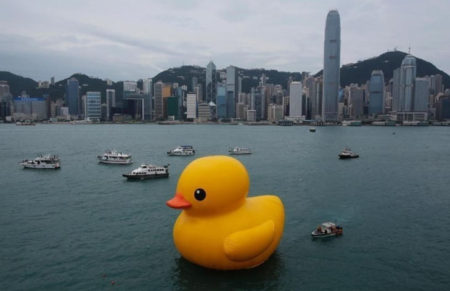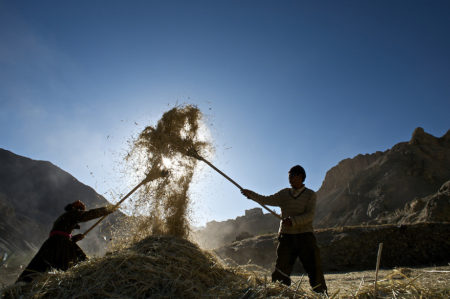July 27, 2019 – For those of you unfamiliar with the wheat and the chaff reference in our posting title, farmers to this day in various parts of the world toss harvested grain in the air (see image above) with the heavier grains falling to the ground and the chaff, the non-grain stuff, blowing away in the wind. It is a simple way to ensure that your wheat, oats, bran, rye, and other cereal crops are relatively free of contaminants.
Well, it seems that the New York Times is on a wheat and chaff exercise using blockchain technology to do exactly what farmers do to separate misinformation from real news. The Times is working with IBM Garage, a blockchain project designed to ensure transparency and trust in any media content, spotting fraud whether it be in printed words or images.
Why now? The New York Times describes the problem it is attempting to solve in its launch of The News Provenance Project:
“There is a gap between the vast amount of information news organizations possess about the media they publish (photos, videos as well as articles and other forms), and the subset of that information to which their users have ready access. That’s especially true when that media travels around the internet, largely stripped of its original context.”
“Into that gap, trolls and bad actors have established many tools for misleading people, generally using authentic photos and videos as source material. Some of the techniques are simple: recycling old images, selective cropping and editing, slowing down and speeding up videos, and so on. Other techniques are more sophisticated, involving the creation of ‘synthetic’ media such as deep fakes.”
How would applying a blockchain to information reporting ferret out the fakery and create certainty in the information we read and see each day?
Blockchain transactions contain a core of key elements:
- Shared ledger – a distributed system of record sharing in what is called peer-to-peer replication, visible to all participants in a transaction, and the single source to determine its legitimacy
- Smart contract – the terms of each transaction or embedded within them
- Privacy – transactions are authenticated and verifiable
- Trust – transactions are endorsed by all participants
- Transparency – all participants see the transactions that impact them
- Encryption – all transactions use cryptography to ensure privacy, trust, and transparency
- Oversight – compliance, and audit are built into every transaction
- Immutability – no participant can alter a transaction once completed
- Error management – any error in a transaction must be corrected by a second transaction to reverse it leaving both for the purposes of audit
The initial focus of the project will be the use of blockchain for the publishing of photographs to determine the legitimacy of the source, and whether an image has been edited before or after publication. From photojournalism the project hopes to eventually expand to the written word to determine the validity of material sources, facts, and stories.
So how will using blockchain technology prove the accuracy and validity of a photograph?
If photographs submitted for publication come to the paper with verifiable metadata secured in a blockchain transaction, it will be possible to ferret out fakes. Each blockchain transaction containing the photograph will capture the assocaited metadata including who took the picture, the time and place, any editing and revision history, watermarks, and copyright. photographs not containing metadata would not be accepted.
The New York Times intends to build an industry-wide “ecosystem in which news and information” are shareable with all news organizations that join the blockchain. Any blockchain transaction involving contributions to the newspaper will be able to be published anywhere in the digital realm with the assurance it is legitimate.

















